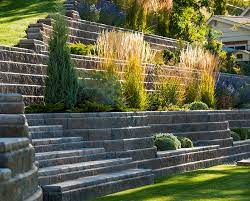Contents
Introduction:
Retaining walls play a crucial role in civil engineering and landscaping, providing structural support while enhancing the aesthetics of landscapes. However, designing a retaining wall requires a deep understanding of engineering principles to ensure stability, durability, and functionality. In this blog, we will delve into the fundamental principles of retaining wall design, equipping you with the knowledge to master the basics and create structurally sound retaining walls.
Understanding the Purpose:
Before diving into the technicalities of retaining wall design, it’s essential to grasp the primary purpose of these structures. Retaining walls are primarily built to resist lateral pressure from soil and to retain soil at different elevations. They are commonly used to create terraces, support roads, and prevent erosion on sloped landscapes.
Mastering the basics of retaining wall design begins with a solid understanding of the fundamental principles that govern their functionality and stability. At the core of retaining wall design is the principle of resisting lateral soil pressure while ensuring structural integrity and longevity. Engineers consider factors such as soil type, slope angle, groundwater conditions, and load-bearing capacity to determine the most suitable design approach.

Types of Retaining Wall Design:
There are various types of retaining walls, each designed to suit specific terrain and aesthetic preferences. Some common types include gravity walls, cantilever walls, anchored walls, and crib walls. The choice of retaining wall type depends on factors such as soil characteristics, site conditions, and design requirements.
Soil Mechanics:
Soil mechanics is a critical aspect of retaining wall design as it directly influences the wall’s stability. Engineers must evaluate soil properties such as cohesion, internal friction angle, and bearing capacity to determine the appropriate design parameters. Understanding the behavior of soil under different conditions is essential for predicting potential failure modes and designing effective retaining structures.
Design Considerations
Several factors must be considered during the design phase to ensure the structural integrity of retaining walls. These include:
Height and Slope
The height and slope of the retained soil determine the lateral pressure exerted on the wall. Engineers must calculate the maximum expected pressure to determine the wall’s required strength and stability.
Drainage
Proper drainage is crucial for preventing water buildup behind the retaining wall, which can exert excessive pressure and lead to instability.
Adequate drainage systems, such as weep holes and French drains, should be incorporated into the design to redirect water away from the wall.
Material Selection
The choice of construction materials significantly impacts the durability and aesthetics of retaining walls. Common materials include concrete, stone, timber, and reinforced earth. Engineers must consider factors such as cost, availability, and environmental impact when selecting the appropriate material for the project.
Structural Reinforcement
In cases where the retained soil exerts significant pressure, structural reinforcement may be necessary to enhance the wall’s stability. Techniques such as the use of geogrids, soil nails, or tiebacks can provide additional support and prevent failure.
Compliance with Regulations:
Retaining wall design must comply with local building codes and regulations to ensure safety and legality. Engineers should familiarize themselves with relevant guidelines regarding wall height, setback requirements, and construction techniques. Failure to adhere to regulatory standards can result in project delays, fines, or even legal liabilities.
Conclusion:
Mastering the basics of retaining wall design requires a comprehensive understanding of soil mechanics, structural engineering principles, and design considerations. By adhering to these principles and incorporating them into your design process, you can create retaining walls that are not only structurally sound but also aesthetically pleasing and environmentally sustainable. Whether you’re a seasoned engineer or a novice designer, embracing these fundamentals will empower you to tackle retaining wall projects with confidence and proficiency.



